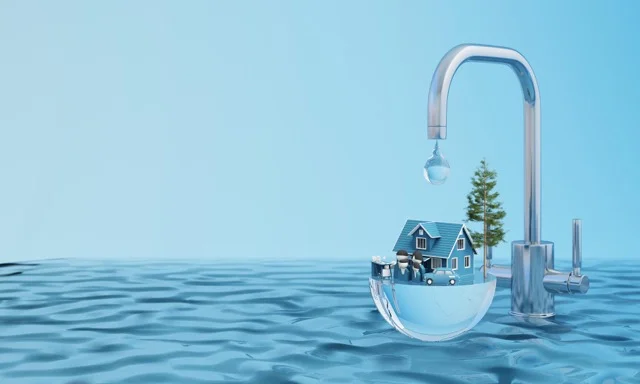8 Simple Techniques For Reclaim Waste
8 Simple Techniques For Reclaim Waste
Blog Article
4 Simple Techniques For Reclaim Waste
Table of ContentsAbout Reclaim WasteAbout Reclaim WasteUnknown Facts About Reclaim WasteAll About Reclaim WasteThe Only Guide to Reclaim Waste
Explore the kinds, occurrences, and kinds of liquid waste. Domestic sewer waste describes the waste and products from a household sewage-disposal tank. This sort of waste is developed by people in homes, schools, and various other buildings. This only includes septic storage tanks that have a drainpipe field. The appropriate management and disposal of residential sewage waste need fluid waste to be moved to a sewage therapy plant where the proper approaches and devices are put on purify and get rid of waste.
Commercial waste often consists of potential threats, such as combustible materials or a combination of fluid and strong waste products, and requires an advanced and in-depth disposal process. The disposal of business waste typically includes the filtration of waste before transport to guarantee secure and proper disposal. Hazardous waste is created from results and runoff of commercial procedures and manufacturing.
This kind of waste can not utilize the exact same sewer management transportation or procedures as septic or industrial liquids. The industrial waste management process requires the examination and screening of fluid waste prior to it undertakes the disposal procedure (liquid waste disposal melbourne). Runoff waste is the liquid waste that comes from runoff and excess stormwater in extremely inhabited locations or cities
Drainage waste can trigger contamination and flooding otherwise managed effectively. Discover more regarding drain cleaning and waste monitoring. Ensuring appropriate waste monitoring can stop calamities and decrease environmental harm. Both people in household setups and specialists in business or production industries can benefit from recognizing the procedures and guidelines of liquid waste management.
The Buzz on Reclaim Waste
Get in touch with PROS Services today to discover our waste administration and disposal solutions and the correct ways to care for the liquid waste you produce.
(https://leonaube33101.wixsite.com/reclaim-waste/post/effective-liquid-waste-removal-and-disposal-everything-you-need-to-know)Do you know what occurs to your water when you disengage, purge the bathroom or drain the cleaning maker? No? Well, it's worth recognizing. This so-called 'wastewater' is not just an essential resource but, after treatment, will certainly be released to our land, waterways or the ocean. Made use of water from toilets, showers, baths, kitchen sinks, laundries and industrial processes is referred to as wastewater.

water utilized to cool equipment or clean plant and tools). Stormwater, a type of wastewater, is drainage that flows from agricultural and metropolitan areas such as roof coverings, parks, yards, roads, courses and gutters into stormwater drains, after rainfall. Stormwater flows neglected straight to local creeks or rivers, ultimately reaching the sea.
Get This Report about Reclaim Waste
In Queensland, many wastewater is dealt with at sewer therapy plants. Wastewater is transported from domestic or commercial websites with a system of drains and pump terminals, understood as sewerage reticulation, to a sewage treatment plant.
The Department of Natural Resources advises city governments about handling, operating and keeping sewerage systems and treatment plants. In unsewered locations, city governments may require owners to mount private or home sewage therapy systems to deal with domestic wastewater from toilets, kitchens, washrooms and washings. The Department of Natural Resources authorizes the usage of family systems when they are shown to be effective.
In some brand-new communities, treatment of some stormwater to get rid of trash, sand and gravel has actually begun utilizing gross pollutant catches. Wastewater treatment happens in four phases: Removes solid issue.
Utilizes tiny living organisms knows as micro-organisms to damage down and get rid of staying dissolved wastes and fine bits. Micro-organisms and wastes are included in the sludge.
Getting The Reclaim Waste To Work
Nutrient elimination is not readily available at all sewer therapy plants since it calls for look what i found expensive specialist devices. Clear liquid effluent generated after treatment may still have disease-causing micro-organisms - liquid waste disposal.

This normally means wastewater needs to be dealt with or contaminants eliminated before it can be released to rivers. Most wastewater moves right into the sewage system. Under the Act, neighborhood federal governments carry out authorizations and licences for environmentally relevant tasks (ERAs) involving wastewater releases that may have a local effect. The division administers approvals and permits to Ages involving wastewater launches that may have a local or statewide impact.
The Only Guide for Reclaim Waste
Otherwise, samples are considered research laboratory analysis. Commonly many tests are required to develop the levels of each of the different contaminants such as oils, hefty steels and pesticides in water. Surveillance gives factual info concerning water quality and can verify that permit problems are being fulfilled. The information acquired via monitoring supplies the basis for making water quality decisions.
Report this page